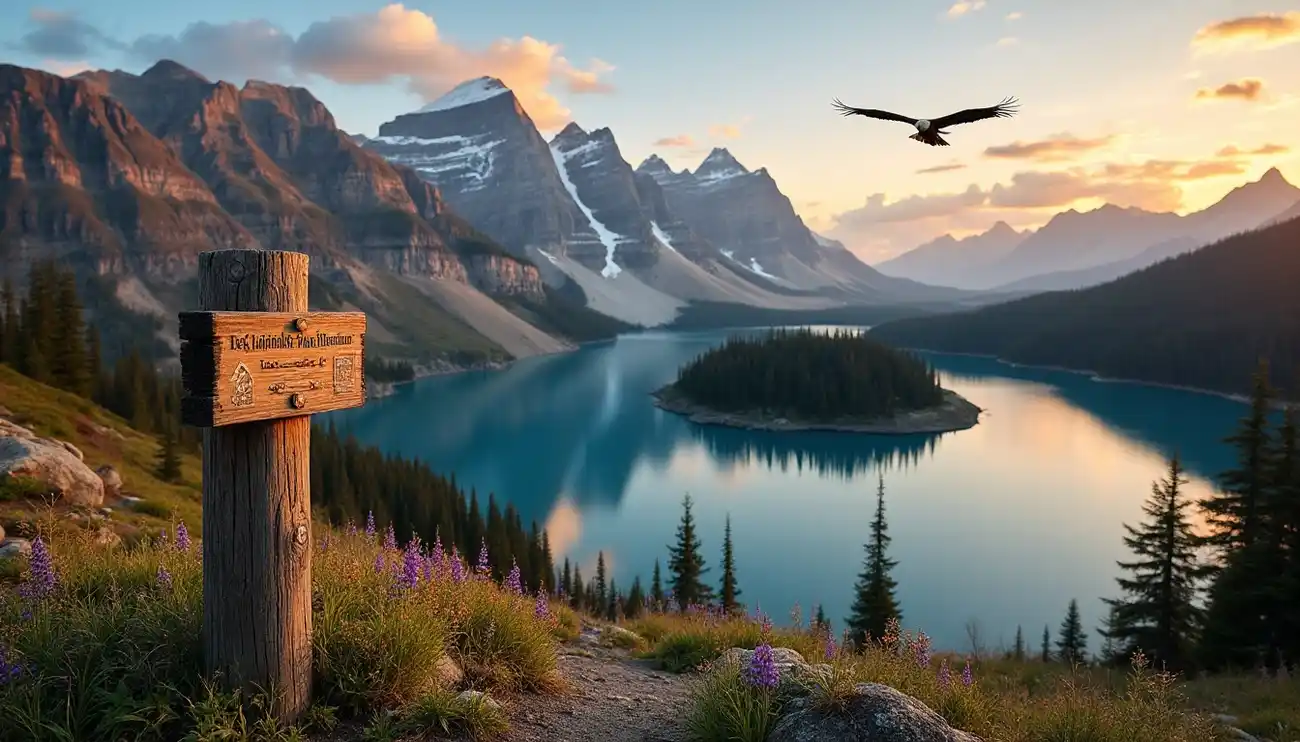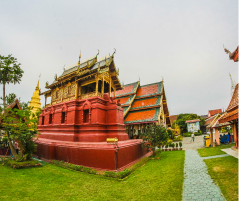The best national parks to visit in the US extend far beyond the famous names everyone knows. Today, 63 designated national parks across the United States draw hundreds of millions of visitors annually to witness jaw-dropping natural wonders and unforgettable terrains. As a park ranger who’s explored them all, I’ve watched Great Smoky Mountains become the most visited national park in America, while Yellowstone—the world’s first national park—continues to amaze visitors with nearly half the world’s active geysers.
However, the best national parks in the USA aren’t always the most crowded ones. While millions flock to iconic destinations like Grand Canyon National Park (which spans over 1.2 million acres and is bigger than Rhode Island), many truly spectacular landscapes remain relatively undiscovered. In fact, some of the top national parks in the US offer incredible experiences without the reservation headaches that plague popular spots like Glacier National Park, which implemented a competitive vehicle reservation program in 2021.
In this guide, I’ll share my insider knowledge of five hidden gems among America’s national parks—places where you can experience breathtaking beauty without battling crowds. These are the parks that fellow rangers recommend to friends and family when they want to experience the true majesty of America’s protected wilderness.
Hidden Gem #1: North Cascades National Park, Washington

“”The North Cascades are Calling!”” — National Park Service, Official U.S. National Park Service, stewards of America’s national parks
North Cascades National Park stands as a pristine alpine paradise just three hours from Seattle, yet remains one of America’s most overlooked natural treasures among the best national parks to visit in the US. Often called “the American Alps,” this rugged wilderness showcases glacier-clad peaks, emerald lakes, and ancient forests that rival any top national parks in US beauty.
Why it’s overlooked
Despite its breathtaking scenery, North Cascades receives remarkably few visitors compared to other best national parks USA. The park complex sees under a million visitors annually, with the actual North Cascades National Park section receiving less than 30,000 visitors per year. This makes it one of the least crowded places among the top national parks in US.
The park’s relative obscurity stems from several factors. First, its rugged, mountainous terrain demands more effort from visitors than some other accessible parks. Additionally, the main road into the park closes during winter months and most of spring, limiting the visitation window. The average hike here starts at about 10 miles and typically involves significant elevation gain, which deters casual tourists seeking easier experiences.
Furthermore, the park’s proximity to Olympic and Mount Rainier National Parks means it’s often overshadowed by its more famous Washington neighbors. Yet this oversight creates a perfect opportunity for adventurous travelers seeking solitude among the most beautiful national parks in the US.
Best hikes and scenic drives
The North Cascades Highway (State Route 20) offers one of the most spectacular drives through any best national park, cutting approximately 30 miles across stunning mountain scenery. This winding road takes you past cascading waterfalls, old-growth forests, and mountain vistas. Notable stops include:
- Diablo Lake Overlook (Mile 131.7) with its striking turquoise waters
- Gorge Creek Falls (Mile 123.4) featuring waterfall and gorge views
- Ross Lake Overlooks (Mile 136) for panoramic lake views
For hiking enthusiasts, North Cascades offers trails ranging from accessible walks to challenging backcountry adventures among its 400+ miles of trails. Some standout options include:
Short Hikes (Under 2 Hours): Thunder Knob Trail (3.6 miles roundtrip) – A popular trail with views of Diablo Lake Thunder Creek Trail (4 miles roundtrip) – An easy trail through old-growth forest
Half-Day Adventures: Pyramid Lake (2.1 miles one way) – Forest hike to a small mountain lake Easy Pass Trail (7.4 miles roundtrip) – Steep trail to a mountain pass with panoramic vistas
Full-Day Explorations: Hidden Lake (4.5 miles one way) – Steep hike to a mountain lake and historic fire lookout Cascade Pass Trail (3.7 miles one way) – Spectacular views of peaks and glaciers
Wildlife and solitude
The biodiversity within North Cascades’ varied ecosystems makes it a wildlife viewer’s paradise. The park houses approximately 75 mammal species, 200 bird species, 28 fish species, and over 500 types of land insects.
Common sightings include black-tailed deer, Douglas squirrels, and pikas, particularly along trails like Big Beaver. More elusive residents include gray wolves, wolverines, and cougars. For bird enthusiasts, watch for bald eagles and ospreys soaring above Stehekin Valley, or harlequin ducks near Harlequin Bridge.
The true magic of North Cascades lies in its solitude. During spring and early summer, before Highway 20 fully opens, you can experience almost complete wilderness isolation. Even during peak summer months, step just a few miles off the main road and you’ll likely find yourself alone amid some of America’s most spectacular scenery.
As a park ranger, I’ve watched visitors arrive stressed from city life and depart transformed after days spent in North Cascades’ peaceful backcountry – certainly earning it a place among the best national parks to visit in the US for those seeking authentic wilderness experiences.
Hidden Gem #2: Lassen Volcanic National Park, California
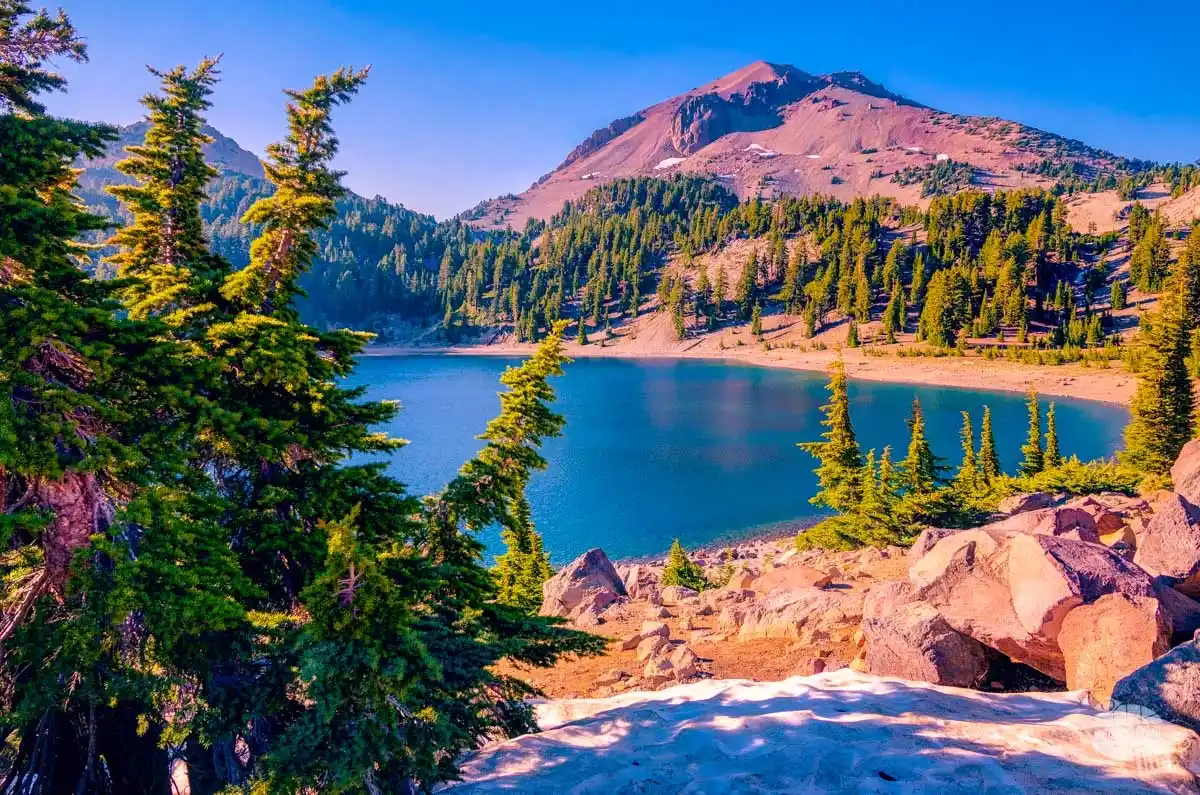
Tucked away in northeastern California lies a volcanic wonderland that few visitors ever experience. Lassen Volcanic National Park showcases nature’s raw power with bubbling mud pots, steaming fumaroles, and striking geological formations that rival more famous thermal destinations—yet receives just a fraction of the visitors.
Unique geothermal features
What truly distinguishes Lassen among the best national parks to visit in the US is its remarkable collection of hydrothermal features. The park contains all four types of volcanoes found in the world (shield, composite, cinder cone, and plug dome), making it a geological treasure. Notably, Lassen Peak stands as the largest plug dome volcano on Earth, towering at 10,457 feet.
Unlike other top national parks in US with thermal features, Lassen offers intimate encounters without overwhelming crowds. Bumpass Hell, the park’s most spectacular hydrothermal area, spans 16 acres of boiling pools, steaming fumaroles, and bubbling mud pots. This basin earned its ominous name after an unfortunate explorer named Kendall Vanhook Bumpass fell through the fragile crust in the 1800s, suffering severe burns.
For a more accessible experience, Sulfur Works offers roadside views of bubbling mud and steam vents via a sidewalk just one mile from the Southwest Entrance. First thing to remember when visiting these areas: stay on designated trails and boardwalks, as ground that appears solid may actually be a thin crust hiding pools of acidic, boiling water.
Best time to visit
Summer stands as the optimal season to experience this hidden gem among the best national parks USA. The park highway (Highway 89) typically opens in late May after snow clearing, although in heavy snow years, it has opened as late as July 26. During summer months, you’ll enjoy fantastic views of Lassen Peak and access to most trails and geothermal features.
Fall brings spectacular colors to the forests, although temperatures drop quickly after sunset. In contrast, winter transforms Lassen into a snow-covered wonderland receiving upwards of 30 feet of snow annually, but most roads close and activities become limited to snowshoeing and cross-country skiing near the entrance areas.
Above all, September after Labor Day offers an ideal balance—pleasant weather, good daylight hours, and significantly fewer visitors.
Top trails and viewpoints
For the best Lassen experience, these trails showcase the park’s diverse landscapes:
- Bumpass Hell Trail (3 miles round-trip): The park’s most popular route leads to a boardwalk through the largest hydrothermal area, offering close views of colorful boiling springs and mud pots
- Lassen Peak Trail (5 miles round-trip): Though challenging with 2,000 feet of elevation gain, this trail to the summit rewards hikers with spectacular panoramic views
- Boiling Springs Lake Trail (moderate difficulty): Starting from Warner Valley, this trail leads to an acidic, bubbling lake surrounded by steam vents and mud pots
- Manzanita Lake Loop (1.7 miles): An easy trail offering beautiful reflections of Lassen Peak on the lake’s surface, perfect for wildlife viewing
As a lesser-visited destination, Lassen provides solitude that’s increasingly rare among the most beautiful national parks in the US—a place where you can experience the Earth’s geological forces at work without fighting through crowds.
Hidden Gem #3: Great Basin National Park, Nevada
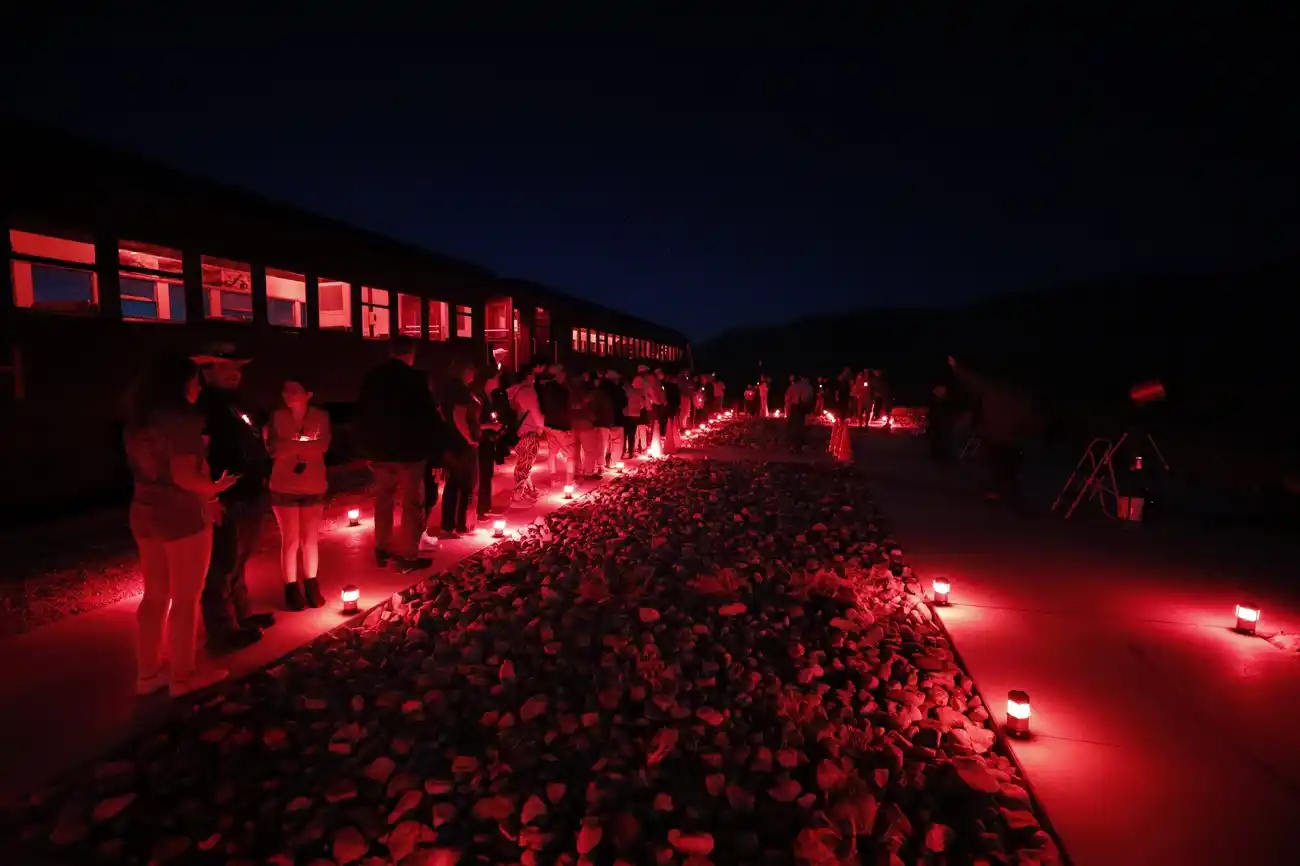
Nestled along Nevada’s eastern border, Great Basin National Park remains one of America’s least-visited treasures among the best national parks to visit in the US. This remote sanctuary offers extraordinary experiences that equal or surpass its more famous counterparts—with night skies so dark you can see thousands of stars and ancient cave systems unlike anywhere else in the country.
Stargazing and astronomy programs
Great Basin boasts some of the darkest skies in the lower 48 states, earning prestigious Gold Tier International Dark Sky Park designation in 2016. On clear, moonless nights, visitors can witness over 6,000 stars with the naked eye—a truly breathtaking experience compared to most locations where light pollution limits visibility to merely hundreds.
The park houses the Great Basin Observatory—the only research-grade observatory located within a US national park. Throughout summer months (Memorial Day through Labor Day), dedicated astronomy rangers conduct programs every Thursday through Sunday. These popular sessions include constellation talks followed by telescope viewing of distant galaxies, planets, and celestial objects.
For serious stargazers, the annual Great Basin Astronomy Festival in September showcases special events including astrophotography workshops, solar telescope observations, and presentations by professional astronomers.
Exploring Lehman Caves
Beneath the park’s surface lies Lehman Caves—Nevada’s longest cave system, accessible only through ranger-guided tours since 1885. What makes these limestone caverns extraordinary is their collection of over 300 rare shield formations, significantly more than found in most other cave systems worldwide.
Two main tour options exist: the 30-minute Gothic Palace Lantern Tour ($8 adults/$4 youth) or the more comprehensive 60-minute Parachute Shield Tour ($12 adults/$6 youth). Tours regularly sell out, consequently reservations on Recreation.gov are strongly recommended 30 days in advance.
Why it’s one of the best national parks in the US for quiet escapes
Great Basin remains gloriously uncrowded—it’s the fifth least-visited national park in America. Meanwhile, unlike popular destinations that receive millions of annual visitors, Great Basin has welcomed just 3.5 million visitors total since 1934.
This isolation creates unparalleled serenity. Moreover, the park’s diverse ecosystem offers everything from ancient bristlecone pine groves to alpine lakes, all without the crowds that diminish wilderness experiences elsewhere. For visitors seeking genuine solitude amid extraordinary natural beauty, Great Basin undoubtedly ranks among the most rewarding national parks in America.
Hidden Gem #4: Congaree National Park, South Carolina
Just outside South Carolina’s capital city lies Congaree National Park, an ecological marvel that protects the largest intact expanse of old-growth bottomland hardwood forest in the southeastern United States. Even though it’s only a 30-minute drive from Columbia, this ecological wonderland remains one of America’s least visited national parks with fewer than 205,000 annual visitors.
What makes it a hidden treasure
Congaree’s treasure lies in its champion trees and remarkable biodiversity. The park houses 25 champion trees, six of which are on the National Champion Tree list, including the world’s tallest loblolly pine, soaring 168 feet high. Once covering millions of acres across the Southeast, these bottomland forests have dwindled to scattered pockets, making Congaree’s preservation especially valuable.
As a result of its ecological significance, UNESCO designated Congaree as a Biosphere Region. The park’s floodplain ecosystem, which experiences approximately 10 floods annually, creates an environment where towering trees thrive alongside one of the most biodiverse forests in the nation.
Best trails through the floodplain forest
The 2.6-mile Boardwalk Loop Trail offers the perfect introduction to Congaree’s ecosystem. This elevated pathway takes you through the heart of the old-growth forest and remains partially accessible during floods.
For a deeper wilderness experience:
- Weston Lake Loop Trail (4.5 miles) – Follows Cedar Creek with opportunities to spot river otters and wading birds
- Kingsnake Trail (12 miles) – A favorite among birders due to diverse vegetation and beautiful views when sloughs are full of water
Tips for visiting in spring and fall
Spring (March-May) and fall (September-November) offer the most comfortable weather with average daily temperatures in the 70s. The park’s infamous “Mosquito Meter” typically reads lower during these seasons.
In late spring, especially mid-May to mid-June, Congaree hosts a magical synchronous firefly display so popular that the park now uses a lottery system for viewing passes. Therefore, plan ahead if you hope to witness this natural phenomenon.
Fall brings spectacular foliage that peaks between late October and early November. The lower humidity, cooler temperatures, and fewer insects make autumn especially ideal for camping and paddling adventures.
Hidden Gem #5: Isle Royale National Park, Michigan
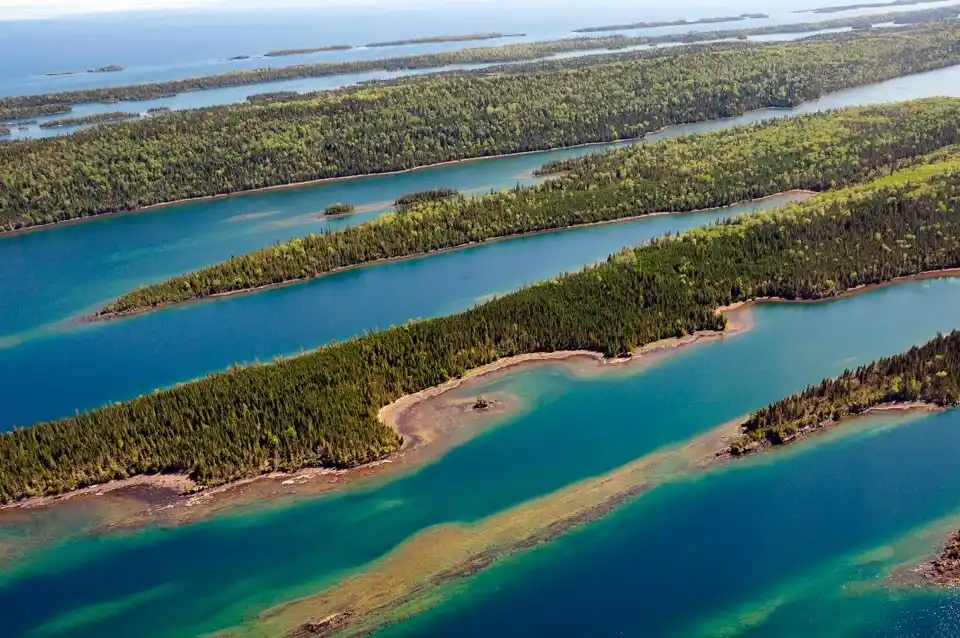
Located in the heart of Lake Superior, Isle Royale National Park represents wilderness isolation at its finest among the best national parks to visit in the US. This remote archipelago consisting of one main island and over 400 smaller islands remains accessible only by crossing Lake Superior’s vast waters, creating an exclusive experience unlike any other in America’s national park system.
How to get there (ferry or seaplane)
Reaching this hidden gem requires planning, as the park can only be accessed via boat or seaplane. Several ferry services operate during the season:
- RANGER III: Runs between Houghton, MI and Rock Harbor (approximately 6 hours one-way)
- ISLE ROYALE QUEEN IV: Connects Copper Harbor, MI to Rock Harbor in about 3 hours
- VOYAGEUR II and SEA HUNTER III: Operate from Grand Portage, MN to Windigo and/or Rock Harbor
Alternatively, Isle Royale Seaplanes provides flights from Hubbell, MI to both Windigo and Rock Harbor, reducing travel time to just 35-45 minutes. Regardless of your chosen transportation, reservations are strongly recommended, and all options are weather-dependent—delays can stretch from hours to multiple days.
Best hikes and kayaking routes
For hikers, the island offers 165 miles of trails through pristine wilderness. Standout day hikes include:
- Stoll Memorial Trail: A relatively easy route to Scoville Point showcasing Lake Superior’s majesty
- Suzy’s Cave Trail: Features a fascinating wave-washed cliff and inland sea arch
- Mount Franklin Trail: One of the highest points along Greenstone Ridge offering views stretching to Canada
Kayaking provides a unique perspective of Isle Royale’s 150+ miles of shoreline. The island’s finger-bays and barrier islands create world-class paddling opportunities, especially along the southeastern and northeastern shorelines where secluded coves and less-occupied campsites await.
Why it’s one of the top national parks for solitude
Indeed, Isle Royale ranks as the least-visited national park in the contiguous United States, creating an atmosphere where you’re more likely to encounter moose, gray wolves, beavers, or foxes than other humans. The park closes entirely from November through mid-April, further preserving its wilderness character.
This isolation offers a rare chance to disconnect completely. With no roads or vehicles allowed, visitors experience a pure backcountry setting where you can truly hear yourself think. At night, stargazing reaches exceptional levels without light pollution, making Isle Royale one of the best national parks in USA for those seeking genuine wilderness immersion.
Conclusion
America’s national park system offers far more than just the Instagram-famous destinations you’ve seen countless times. Throughout my career as a park ranger, I’ve witnessed firsthand how these five hidden treasures provide experiences equally magnificent to their more famous counterparts—yet with a precious commodity that’s becoming increasingly rare: solitude.
North Cascades delivers alpine majesty without the crowds. Lassen Volcanic showcases bubbling geothermal wonders you can actually hear without competing voices drowning them out. Great Basin’s night skies reveal thousands of stars most Americans never see. Congaree preserves ancient forests that once stretched across the entire Southeast. Isle Royale offers wilderness isolation that feels almost primeval.
What connects these parks, beyond their natural splendor, is the opportunity for genuine connection with nature. Unlike Yellowstone or Yosemite, where reservation systems and traffic jams have become unfortunate necessities, these parks still allow spontaneous adventure and quiet contemplation.
My fellow rangers often note how visitors to these less-traveled parks seem to leave different than they arrived—more relaxed, more attuned to natural rhythms, fundamentally changed by the experience of true wilderness. This transformation simply happens more readily when you’re not shuffling through crowded viewpoints or competing for parking spaces.
Your next national park adventure awaits beyond the usual destinations. Pack your hiking boots, bring your sense of wonder, and discover these remarkable places while they still feel like secrets. Though they certainly rank among the best national parks in America, their greatest gift remains the space to experience them on your own terms.
FAQs
Q1. What are some lesser-known but beautiful national parks in the US? Some hidden gems include North Cascades in Washington, Lassen Volcanic in California, Great Basin in Nevada, Congaree in South Carolina, and Isle Royale in Michigan. These parks offer stunning landscapes and unique experiences without the crowds of more famous destinations.
Q2. How can I experience true solitude in a national park? For a truly solitary experience, consider visiting less crowded parks like Great Basin or Isle Royale. These parks receive far fewer visitors annually, allowing for peaceful exploration of wilderness areas and a greater chance of encountering wildlife undisturbed.
Q3. Which national park is best for stargazing? Great Basin National Park in Nevada is renowned for its exceptional dark skies. As a Gold Tier International Dark Sky Park, it offers unparalleled stargazing opportunities, with visitors able to see thousands of stars on clear nights.
Q4. Are there any national parks with unique geological features? Lassen Volcanic National Park in California showcases remarkable geothermal activity, including bubbling mud pots and steaming fumaroles. It’s home to all four types of volcanoes found in the world, making it a geological treasure with fewer crowds than similar parks.
Q5. What’s a good national park for seeing diverse ecosystems? Congaree National Park in South Carolina preserves the largest intact expanse of old-growth bottomland hardwood forest in the southeastern United States. Its unique floodplain ecosystem hosts champion trees and remarkable biodiversity, offering visitors a glimpse into a rare and vital habitat.

